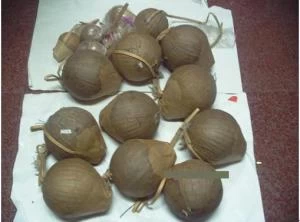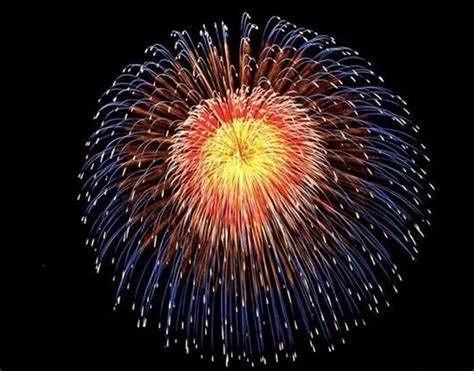Shells are one of the most complicated and technically demanding categories of fireworks, and their production process involves many fields such as chemical, mechanical and safety control. The following is the standardised production process and key technical points of fireworks, which is based on the Chinese national standard (GB 10631-2013 "Fireworks Safety and Quality") and relevant industry norms:
I. Design and formulation stage
- Structural design
- Determine the diameter of the cartridge (common specifications: 3 inches, 6 inches, 12 inches, etc.) and layering structure (single layer or multi-layer effect combination);
- Design the shell material (usually paper or plastic moulding), which is required to have pressure resistance and moisture resistance;
- Drawing the internal charge layout of the cartridge, specifying the distribution of bright beads, opening charges, and time-delay fuses.
- Chemical formulation development
- Bright bead production: mix metal salts according to different colour effects (e.g. strontium salt - red, barium salt - green, copper salt - blue);
- Bleeding drug formulation: based on black powder, mixed with potassium perchlorate, aluminium powder, etc. to control the explosive force and burning speed;
- Time-delay fuse: precise calculation of the burning speed (usually 3-5 seconds/segment) to ensure timed detonation of the projectile after lift-off.
II. Material preparation and pre-treatment
- Shell production
- Adopt wet papermaking process to press multi-layer paper shells, or injection moulding plastic shells;
- Shells should pass the pressure test (e.g. 6-inch shells should withstand ≥1.5MPa internal pressure without rupture).
- Bright beads production
- Mix oxidant (potassium nitrate), fuel (charcoal), colouring agent and other raw materials, add water to granulate into 2-5mm diameter particles;
- After drying, the surface is covered with a retardant layer (wormwood or resin) to prevent premature ignition.
- Lead processing
- The core gunpowder (black powder) is wrapped with moisture-proof cotton thread, and the outer layer is covered with waterproof kraft paper;
- Each section of the fuse needs to be sampled and tested for burning speed error (within ±0.5 sec/m).
III. Bullet assembly process
- Bottom propellant loading
- Load black powder propellant at the bottom of the cartridge case (the dosage is calculated according to the weight of the cartridge, e.g. 6-inch cartridges need about 150g);
- After compaction, insert the extension fuse to ensure connection with the upper layer of the opening charge.
- Assembly of the effect layer
- Layers of beads are placed (each layer separated by cardboard) and filled with a primer (usually a mixture of potassium nitrate + aluminium powder);
- Multi-layer cartridges need to be assembled layer by layer, with increasing lead time delays for each layer (e.g. 3 seconds for the first layer, 5 seconds for the second layer).
- Sealing and Reinforcement
- The top is sealed with clay or plaster, and a quick fuse is inserted as the main ignition head;
- The outer shell is wrapped with explosion-proof tape and labelled with the effect of ignition (e.g. "peony", "chrysanthemum", etc.).
?
IV. Quality inspection and testing
- Safety testing
- Vibration test: simulate transport vibration, detect whether the structure of the bullet body is loose;
- Drop test: free fall from a height of 1.5 metres to ensure no accidental detonation;
- Moisture test: stored in a 90% humidity environment for 48 hours, the fuse needs to ignite normally.
- Ignition performance verification
- Sample test release: measure the height of lift-off (e.g. 6-inch shells need to reach 150-200 metres);
- Effectiveness assessment: record the explosion diameter, colour saturation, pattern symmetry and other parameters;
- Wreckage inspection: requires complete fragmentation of the cartridge case without large residue.
V. Packaging and storage and transport specifications
- Graded packaging
- Class A shells (bullet diameter ≥ 76mm) shall be packaged in a separate wooden box, lined with anti-vibration foam;
- The outer box marked with "explosives" logo, ignition level (such as Class II civilian), production batch number.
- Storage management
- Dedicated warehouse to meet the fire and explosion requirements (wall thickness ≥ 24cm, temperature control ≤ 35 ℃);
- The stacking height is not more than 2.5 metres, and the distance from the wall is ≥0.5 metres.
- Transport requirements
- Use explosion-proof vehicle for transport, speed limit ≤60km/h;
- It is strictly prohibited to mix with other dangerous goods, and the whole process is monitored by GPS.
VI. Key control points for safe production
- Static electricity protection
- Conductive table mats are laid on the working table surface, and humidity is controlled at 50%-60%;
- Operators wear anti-static clothing, equipment grounding resistance ≤ 4Ω.
- Quantitative production limit
- The quantity of medicine stored in a single workshop is ≤100kg, and the personnel are isolated when loading the medicine mechanically;
- Adoption of explosion-proof electrical equipment (e.g. IP54 protection class).
- Personnel qualification
- Operators are required to hold the "Fireworks Special Operation Qualification Certificate";
- Receive 72 hours of safety training annually and be familiar with MSDS (Material Safety Data Sheet).
summaries
The production of shells is a typical high-risk fine chemical process, which requires strict adherence to the principle of "small amount, multiple times, and diligent transport away". Modern processes have introduced automated loading machines, X-ray flaw detectors and other equipment, but the core process still requires manual intervention. Manufacturers must obtain a Fireworks Safety Production Licence and pass ISO 9001 quality management system certification before they can operate legally.This article comes from: https://fireworkslit.com/Fireworkslit-https://fireworkslit.com/what-is-the-production-process-of-a-salvo/
烟花燃放,烟花采购,花炮咨询,可以联系我们:q1chen@163.com



评论